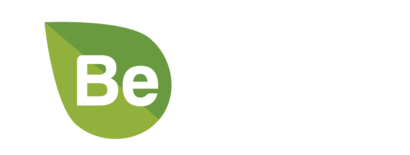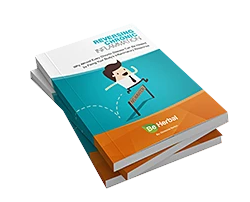Forget where you parked your car this morning? Having a hard time recalling where you placed your cell phone? Are you working at your optimum level mentally, or does it feel like tying your shoes should be something relegated to those with Mensa memberships? You likely need a little brain boost. Fortunately, there’s a natural herbal remedy that works like a restart button for your brain.
The Oldest Tree on Earth
Gingko Biloba (Salisburia adiantifolia) is called the oldest living tree on earth. It is the only living species from the Ginkgophyta family, practically a fossil, growing unchanged today from its relatives that grew more than 200 million years ago.
Peter Crane, a botanist from the Yale School of Forestry & Environmental Studies, calls it a unique and resilient plant, and there’s good reason. This plant from the age of the dinosaurs has healing properties that have lasted through the eons of time.
Powerful Healing from the Age of the Dinosaurs
The seeds of the Ginkgo Biloba tree smell horrid, but the leaves, roots and stems contain some astounding phytonutrients that have been used to heal those who suffer from dementia, poor memory, depression and even low energy. This herb has been so helpful in addressing multiple chronic diseases that it has even been given via prescription in Germany.
The herb has been studied for decades in Asia, and throughout Europe and in traditional Chinese medicine, Ginkgo (called Yinxing) is often prescribed for its protective effects against mitochondrial damage and oxidative stress.
Used by Ancient Shamans
The Ginkgo is thought to be a manifestation of the perfect balance of female and male energies.As Subhuti Dharmandanda from the Institute for Traditional Medicine and Heiner Fruehauf from the National University of Natural Medicine, College of Classical Chinese Medicine detail,
“Apart from being a manifestation of the sacred concept of yin and yang, the tree was primarily a symbol of longevity and vitality. Most gingkos grow to an imposing height and width during their lifetime, often living for several millennia. Many Daoist temple courtyards feature ancient gingko trees that are thousands of years old, and one particular tree is said to be about 10,000 years old (for a list of ancient gingkos in mainland China, see Ma Wenfei et. al., Interesting Tales About Medicinal Plants [Baicao Yaoyong Quhua], Jiangxi Kexue Jishu Chubanshe, Nanchang: 1994, p. 147-48). In many cases, the trees predate the temple structure and often mark the locale of early shamanic worship. As a mysterious, long-living tree with roots in great antiquity the gingko was an ideal candidate for the practice of shamanic tree worship. Li Shizhen reports that “Daoist shamans used to engrave their magical spells and seals on old growth gingko wood in order to communicate with the spirit world.”
40 Phytochemicals in One Plant
Modern science often takes quite a while to figure out exactly how Mother Nature works, but thus far, Gingko Biloba is known to have more than 40 compounds, with two being ‘active’ components which treat disease. The flavanoids and terpenoids in the plant are largely what gives it its power.
Flavanoids are a class of antioxidants that work to undo free-radical damage to our cells. Flavanoids are particularly good at protecting the cells of the brain. Flavonoids protect the nerves, heart muscle, blood vessels and retina from damage. Terpenoids (such as ginkgolides) improve blood flow by dilating blood vessels and reducing the stickiness of platelets. These are both important actions to help the brain work at its most optimal level.
Terpenes are thought to increase blood circulation in the brain, protecting cells in the hippocampus, which is involved in retaining memories. According to research from Stanford University, the terpenes in Ginkgo also help to protect the brain against overall oxidative stress, and reduce inflammation.
For Alzheimer’s patients in particular, Ginkgo Biloba’s terpenes can help to remove deadly beta amyloid, a plaque that builds up in the brain, and that is thought to contribute to the disease. The International Journal of Phyotherapy and Phytopharmacology says,
“Currently the most investigated and adopted herbal remedy for cognitive disorders and Alzheimer’s disease (AD).”
While the other phytochemicals in Ginkgo Biloba are currently thought to be inactive, scientists simply don’t understand how they may aid the body and protect the brain.
Ginkgo and the Reduction of Inflammation
Inflammation is thought to be a large cause of almost every brain ailment you can imagine, whether it is depression, migraine headaches, or a poor memory. All of these are caused by pathological levels of inflammation in the body.
One theory about why Gingko Biloba has been so effective at boosting brain power is that it helps the brain to break down sugars. EGb 76, an antioxidant in the plant, is so powerful at reducing inflammation that it has even been used to treat cancerous tumors.
You can just imagine its effects on the brain:
- In one study, the extracts of Ginkgo were able to help repair cells that were subjected to ischemic brain injury.
- Another study linked Ginkgo extracts to repairing extracellular deposits of amyloid β peptide (Aβ) and microglia-dominated neuroinflammation.
- Yet another study found that Ginkgo helped patients suffering from Parkinson’s disease, while helping to promote learning and cognitive function.
- Researcher Jeremy P.E. Spencer says that Ginkgo Biloba extracts protect hippocampal neurons against nitric oxide- and beta-amyloid-induced neurotoxicity.
- The journal, Neuroradiology confirms that extracts from this living fossil help promote cerebral blood flow, helping to improve our memory.
How to Dose Gingko for Better Brain Performance or a Cure
Though everyone’s requirements for a supplement can vary, several studies have suggested that taking 240-600 milligrams of Ginkgo Biloba’s extracts for several months will have the most profound effect on your mood, memory and cognitive functioning.
For insufficient blood flow to the brain, up to 160 milligrams of ginkgo can been taken by mouth daily for 12 weeks in up to three divided doses.
For depression and seasonal affective disorder (SAD), 240 milligrams of ginkgo can be taken by mouth for up to 10 weeks.
For generalized anxiety disorder, 240-480 milligrams of ginkgo can be taken by mouth daily in up to three divided doses for 4-8 weeks.
To supercharge your brain and to experience outstanding cognitive performance, up to 600 milligrams of ginkgo can be taken by mouth as a tablet, flavone glycoside, ginkgolide or leaf extract in single or divided doses for up to eight months.
For dementia, the same 600 milligram dose is suggested.
No matter how you decide to use this ancient tree to supplement your health, you likely won’t be forgetting where you put your keys. Get ready for a super-powered brain by using Ginkgo Biloba!


